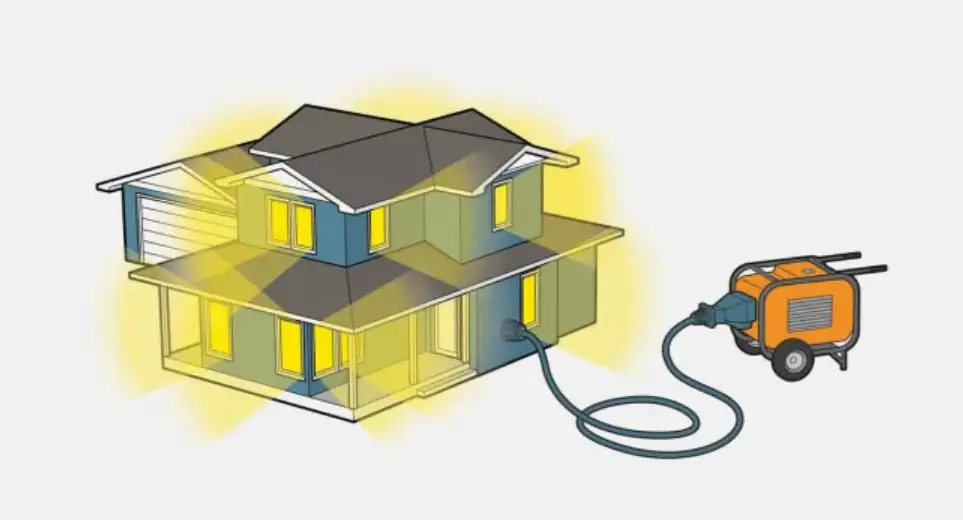© ROOT-NATION.com - Use of content is permitted with a backlink.
Determining the output power is an important step in selecting a generator that suits a specific application. I have already discussed how to choose a generator, and today we will focus in more detail on calculating the required power.

There are several factors that determine a generator’s output power, including the size and type of the generator itself, the type of fuel it uses, and the load it can handle.
Read also: How to use Google Find My Device service to track your lost devices
Specifications
- Size and type of generator: The size and type of a generator are the most important factors determining its output power. Small portable generators usually have a power range of about 2000-5000 watts, while larger, stationary ones can have power outputs up to several hundred thousand watts.
- Fuel type: This also affects its output power. Diesel generators typically have a higher output power than gasoline generators of the same size because diesel fuel is more energy-dense.
- Load: The load that the generator must support also affects its output power. A generator that will operate under a large load needs to have a higher output power than one that will operate under a smaller load.
- Engine power: The power of the engine, whether diesel, gasoline, gas, or any other type, impacts the generator’s output power. A more powerful engine will provide a higher output power for the generator.
- Alternator: The alternator is the component that converts the engine’s mechanical energy into electrical energy. The output power of the generator is directly proportional to the rated power of the alternator.
- Voltage and frequency: The voltage and frequency at which the generator operates also affect its output power. A generator operating at a higher voltage or frequency will have a higher output power.
- To determine the output power of a generator, it is essential to understand the specific application requirements and consider the factors that influence it.

It is also important to note that when selecting a generator, the output power should be based on the maximum expected load, not the average load. This ensures the generator has enough power to handle peak loads and prevents overloading and shutdowns.
Read also: 6 Best AI Music Generators That Are Already Available
Calculation
In general, the generator’s power should be chosen based on the number of electrical appliances and equipment that may be connected simultaneously after the power is supplied. If there is no urgent need to connect high-power electrical equipment, a capacity of 3-4 kW will be sufficient. Here are approximate power values for electrical appliances (these are very average values; your devices may vary, so it’s better to check the manual/specifications):

The first thing you should do is conduct a complete inventory of all electrical appliances in your home that you believe must be powered during a blackout. To do this, create your own list of necessary appliances and household equipment. Write down the name of each appliance and its power rating in kilowatts (this is usually directly indicated on the appliance). Sum up the total power. This will give you a rough estimate of your power requirements.
Let’s imagine that we need a charging station to power a large refrigerator. To start it up, you need a certain amount of starting power, and to operate it, you need operating power. For example, your refrigerator consumes 500 watts. To calculate how much power you need from a charging station, use the following formula:
Operating power R=500 W
Starting power S=500×3=1500 W
So, you need the power of the charging station/generator to be at least 1500 watts. This will ensure continuous power supply to the refrigerator for several hours. Using this formula, you can calculate the operating power for each device in your home that you want to connect to the charging station.
At this stage, the obtained result usually “overwhelms,” but it’s important not to overlook the starting current coefficients of electrical appliances—details we’ll discuss later. Remember to also account for power reserves, as this will enhance the outcome. What about the power ratings of electrical appliances? For homes or cottages, gasoline generators with a power output of 3 kW are commonly chosen, or more powerful ones up to 5 kW.

Before purchasing a mini power station, it is advisable to determine:
- Whether it will power all rooms or specific electrical appliances
- Whether additional devices need to be connected
- Whether there may be an increase in electricity consumers powered by it in the future.
As a result of such calculations, you will obtain a total in kilowatts (kW), which will be closer to the actual power requirement.
Read also: How to Run ChatGPT as a Windows Program
Power reserve
When calculating the power of a generator, it’s crucial to consider how many kilowatts the total power of the appliances connected simultaneously will amount to, and ensure they can operate for at least five minutes. And not only that—you should add 20-30% to the resulting number. This creates a power reserve necessary for the generator to operate optimally, as the most suitable load should be around 80% of its rated capacity.

To make the right choice regarding power reserves, it’s also important to consider whether you are buying the generator for backup power during temporary outages or if it will be your primary source of electricity. However, the latter is quite rare. Typically, generators for homes are used as backups.
For a backup power generator that only powers the lighting in a house and a few household appliances, a power reserve of around 10% may be sufficient, as many online customers suggest. However, for a diesel generator intended as a permanent power source where there is no grid connection (construction sites, shops), it’s better to increase the power reserve.
It should be noted that some companies, aiming to enhance their product’s appeal, may only list the maximum value and provide a coefficient to calculate the nominal value. Therefore, it’s important to carefully study the specifications.
Read also: What is Spatial Audio, How Does It Work, and How to Use It
Conclusions
Determining the output power is a crucial step in choosing a generator suitable for a specific application. Factors such as the size and type of the generator, the type of fuel it uses, expected load, engine power, alternator power, voltage, and frequency all play important roles. By understanding these factors and selecting a generator of appropriate size and power, you can ensure a reliable backup power source that will handle the load for its intended use effectively.

Incorrectly selecting the power reserve can lead to overloading the equipment and causing it to shut down. A properly chosen power reserve enables the generator to power unforeseen electrical devices, which is crucial. For instance, today you might only have a refrigerator, but in a month, if you buy a freezer as well, having that extra power reserve will prove invaluable.

Only after accounting for all the equipment involved and conducting careful calculations should a decision be made on purchasing a particular model. If the calculations still pose difficulties, simply contact the seller for consultation and advice.
Read also:

